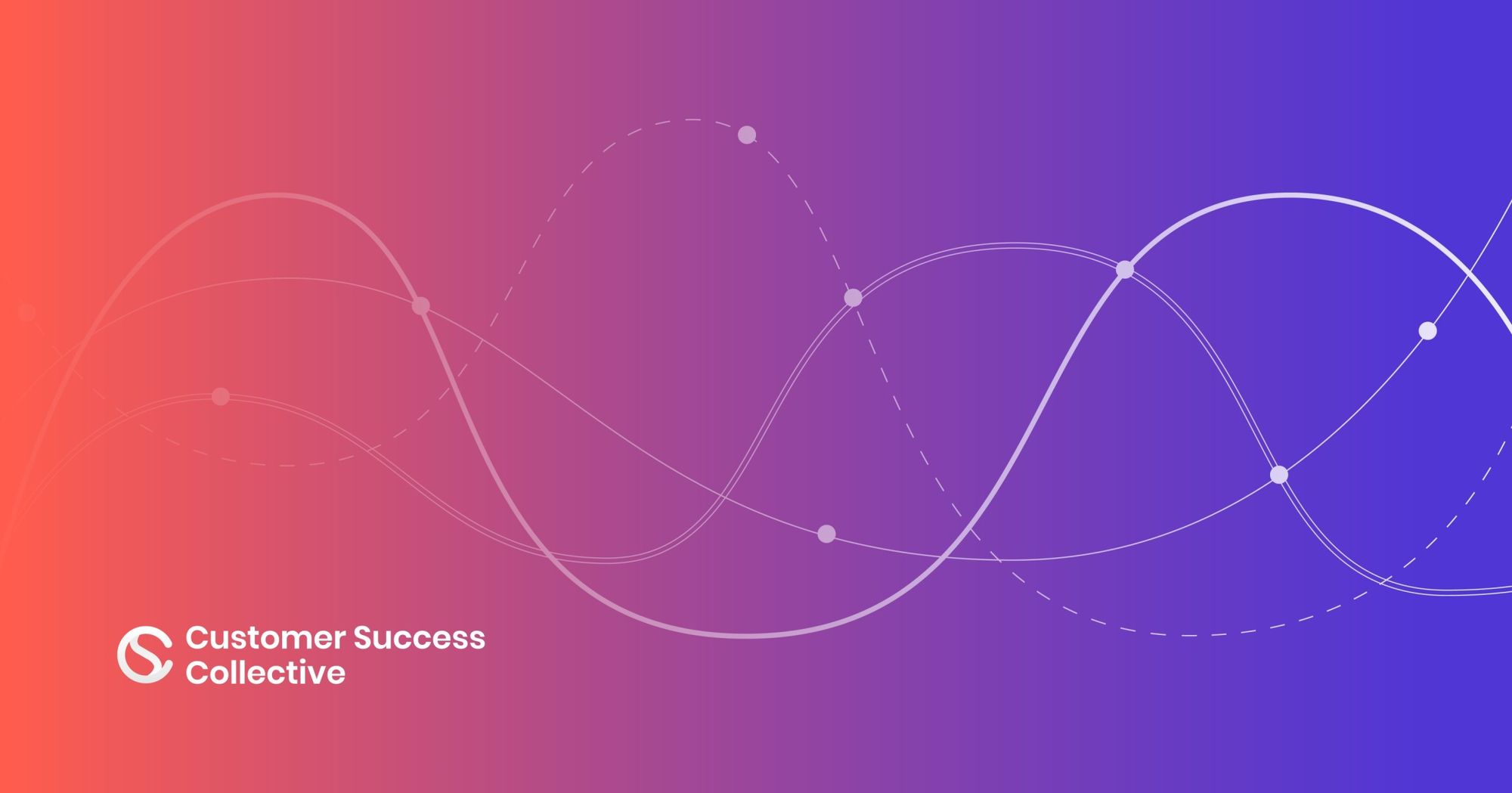Customer segmentation is a strategy used by businesses that sort and categorize their existing customers by certain characteristics. This strategy has a multitude of benefits, which we’ll be going over in this comprehensive guide.
In this article, we’ll cover:
- What customer segmentation is,
- Why you should use it within your customer success strategy,
- How you should segment your customers, and
- Types of customer segmentation software used by customer success professionals
What is customer segmentation?
Customer segmentation is a strategy used by a number of different departments within a company, including customer success, customer marketing and product marketing. It groups your existing customer base by a number of different demographics, traits, and factors.
By segmenting your audience, you make it easier to accurately market to them. This kind of segmentation will change depending on your business, whether you’re B2B or B2C.
B2B customer segmentation might section customers off by industry, company size, location, or purchase history.
B2C customer segmentation uses location, age, personality, purchase history, or employment status, among others.
Customer segmentation can provide you with the groundwork to create customer personas, messaging, and customer success strategies.
Customer segmentation vs market segmentation
Both customer segmentation and market segmentation have their place as useful tools for marketing teams – and both place customers into different group sets as well. The difference is that market segmentation does this by grouping customers by the products they buy.
For example, if you were segmenting the car industry, you might segment customers based on the type of car they bought. This is different from segmenting customers by buying behaviors, as market segmentation doesn’t go into detail on specific customer habits and history. This is where customer segmentation comes in.
Market segmentation can also be categorized by factors such as distribution channels. Customer and market segmentation can be used together to reveal important trends too.
Why should you segment your customers?
Segmentation is a fantastic way to streamline and optimize your customer success strategy. It’s an important feature that should be taken advantage of: it can help make your communication efforts appear more personalized to each audience subset.
Segmentation can give your team an advantage, offering you insights into how to approach your customer base.
Learning
Customer segmentation shows you who your customers are; it gives insights into which trait or demographic makes up your customer base.
If you segment your customers often, on a yearly or quarterly basis, you can see how this data changes over time.
Understanding
Segmentation can help you understand which of your customers are most valuable. Not just the largest segment, but the one most loyal, the highest spenders, and the ones with the most potential to grow.
So much of this information can then be used to your advantage and influence future strategies.
Applying
Understanding who makes up your customer base improves processes like customer onboarding and curating customer feedback. It’ll also help you formulate advertisements and resources that resonate with each group. Taking the time to do this kind of research can make your advertising more efficient.
Segmentation can also optimize your customer service by identifying their pain points, so you can apply that to your services and improve customer experience.
Fixing these problems for your customer can go a long way toward showing them how much you value them.
Not only does segmentation improve creating buyer and user personas, but it also aids other internal processes like marketing campaigns.
Developing
Segmentation not only perfects your current processes and lines of communication but can set up your business for future success. One way it does that is through market research. If you know your customer base, you’ll know the kinds of products they’re interested in.
By applying this information, you can identify new product or service opportunities to invest in. Understanding your customer means that any new products will be more likely to succeed.
Taking the steps to improve current processes can increase customer loyalty and turn them into long-term advocates. When customers see businesses consistently making changes and improvements based on their feedback, they feel valued.
Each step to improving the customer-to-business relationship is one step closer to making them raving advocates for your organization.
In turn, this increases the customer lifetime value, which is the total worth of a customer to your business over the period of time you maintain a relationship with them.
Customers that buy little and often are far more valuable to you than any one-off customer. Improving the value of each customer by using segmentation to improve loyalty can stabilize and consistently improve your revenue streams.
How to segment your customers
There are a variety of ways in which you can separate your customers into different groups. First, you must choose the right type of customer segmentation for your industry and business.
Different types of customer segmentation
There are seven most common types of segmentation used by businesses. These are as follows:
- Demographic segmentation: Demographic segmentation divides your customer by characteristics like age, gender, income, education, and marital status. This is mostly used by B2C businesses.
- Geographic segmentation: This type of segmentation divides your customers by their physical location. This can be a country, state, city, or town. This is most useful for businesses that work on a national or international scale.
- Psychographic segmentation: Psychographic segmentation uses personality traits, values, attitudes, and interests to segment its customers. This type of segmentation is useful for companies with transparent brand values, be it cultural, ethical, political, charitable, social, or other.
- Technographic segmentation: This segmentation is most useful for companies that have technological or SaaS services. It divides customers by the type of technology they use, be it desktop, mobile, apps, or software.
- Behavioral segmentation: By behavioral, we mean segmenting customers by their buying behaviors. This’ll include segmenting them by their most frequent habits, product and feature use, and how they use your site.
- Needs-based segmentation: Needs-based segmentation divides customers by their pain points and must-haves. This can help when updating current features or creating new products.
- Value-based segmentation: This segments the customer based on their relationship with your business – mainly, their economical value to your company. Value-based segmentation takes in factors such as the revenue each customer group generates as well as the cost of keeping the group.

The MAP model
The MAP model is a framework that can help identify your business’ best customers. This is specifically a holistic approach to customer segmentation that should still help you attract more customers and improve customer retention.
This process is useful for those with limited resources. Everyone should be able to segment their customer, no matter their budget or level of resources.
The MAP model has three key stages to help you gather this information yourself:
- Measure volume
- Analyze performance
- Prioritize potential
Before we jump into the process, you should have access to your customer database and a spreadsheet tool.
1. Measure volume
Build a data set
Begin with the data set for your existing customers. Most companies collect data on their existing customers, but that’s unlikely to be organized in a way that’s useful.
You can use this information to compare and contrast different data points and create a new, more relevant set. To do this, begin by categorizing your data into the different segments listed above.
For this master set, use all available data, including from customers who have churned or used a free trial. Every piece is useful for drawing up an accurate historical timeline. Then, these will be filtered by performance during the second stage.
Another point to make a note of is their account data, such as their subscription start date, billing type (monthly or annual), and subscription plan.
Once you’ve collected this into one spreadsheet, then you’re ready for the next step.
Pattern identification
This is the stage where you begin to segment your customers. Do this by arranging your data by similar customer attributes, from which a pattern should emerge.
The attributes you identify in potential customers should be ones that can be easily identified and used on an ongoing basis.
To start the analysis, sort your data by volume. The segments with the highest volume are the ones that you’re already successfully retaining.
2. Analyze performance
This segment is all about confirming and supporting your hypothesis set out in part one. It uses particular metrics and data to help you analyze your segments. They include:
Conversion rate
The conversion rate is the percentage of customers within each segment who convert into paying customers. This is particularly important if you have a sales model that includes free trials, self-serve buying flows, or freemium models.
The goal is to understand how likely someone within the segment will successfully convert. It's best to measure data over a long period of time (12 months or more). This'll ensure that the conversion rates are not just a fluke.
Calculate the conversion rate by dividing the number of customers who converted by the number of customers eligible to convert, then multiply by 100. This will give you a percentage of the total conversion rate.
For example:
Number of conversions = 500 people
Number of eligible customers to convert = 1000
500/1000 x 100 = 50%
Customer Conversion Rate = 50%
You’ll want to do this for each segment, then find the average conversion rate for your whole customer base. That'll help identify which segment’s conversion is higher or lower than the average customer.
ARPU - ARPU, or ARPA, stands for average revenue per unit (or per account). This helps you compare how much a segmented customer pays for your product. This can then be compared to other segments and non-segmented customers.
To calculate ARPU, take the total invoice amount across every customer within a particular customer segment. Then you need to divide it by the number of paying customers in that segment.
For example:
Total invoice amount for a year = $100,000
Total number of customers = 100
100,000/ 100 = $1,000
Total ARPU for that segment in a year = $1,000
Then you can compare segments by the amount they’re willing to pay, based on revenue numbers.
Lifetime value - Customer lifetime value, as mentioned above, is the total amount of revenue you can expect to gain from a customer during their time with you.
For this calculation, you need two bits of data.
This first is the average purchase value. This then gets multiplied by the average purchase frequency rate, which will give you the customer value.
You then multiply this by the average customer lifespan to determine the customer lifetime value.

3. Prioritize potential
Once you've identified the most valuable segments, you need to start prioritizing them.
This section will look at your potential to win a particular segment of the market. There are four main categories to identify a segment’s potential:
Addressable market
The total addressable market (or TAM) is the complete amount of demand for your product in the market. So, if you sold scented candles, your total accessible market would be the whole candle market.
This is calculated by the total number of people who need candles multiplied by the average cost of a candle. The size of the addressable market must be large enough to support your growth.
Service available market - Also known as SAM, it calculates whether or not a segment can achieve high enough revenue growth to be worth investing in.
To calculate SAM, the total addressable market is broken down into specific owned segments. From our candle example: TAM is the international candle market and SAM is the scented candle market in North America. This is your company’s target audience.
So SAM provides the total possible revenue growth for a segment. TAM helps you understand the growth potential of your segments combined. You may choose a market segment with lower performance if it has a larger addressable market. That way there’s a higher potential for growth.
Customer acquisition cost
Customer acquisition cost, CAC for short, measures how much an organization spends to acquire new customers. In an ideal world, the customer should be worth up to 3x times more than what it takes to acquire them.
Remember costs include things like advertising campaigns and commissions, but also marketing and sales salaries.
Competitive landscape
The final way you should calculate a segment's potential is by researching and gathering data on your competitors within your chosen market. Understanding your competitors through research is a good way to see which segments you’ll be competing harder for.
It costs more to acquire customers for segments where you have to compete with other businesses – and where there’s a higher likelihood that customers will churn.
Look at your competitors’ websites, any membership plans and packages, and, of course, their content and resources. As you’re positioned within the same segments, you’ll be able to analyze which group they're prioritizing. This can then tell you which ones will be easier for you to market too.
Tamara Grominsky, Director of Product Marketing at Unbounce, gave a more comprehensive breakdown of this model for our sister community, Product Marketing Alliance. Read the full guide here:
Customer segmentation software used by customer marketers
If you have the budget and resources available to you, taking advantage of segmentation software can really help simplify things. These tools can gather and segment the data for you.
What should a customer segmentation tool do?
A tool that helps you optimize your customer segmentation should do the following:
Aid the business - A software tool is exactly that; a tool. Its primary purpose is to make your life easier. It's important that the information is collected for you and separated out accordingly.
This is a master record of all your data, so you should have everything you need in one place.
Be customizable - Software should be flexible and allow you to prioritize certain metrics that are relevant to your business. You should be able to customize these as your priorities change.
Be scalable - Every business’ priority is to grow, be it in size, revenue numbers, advocate numbers, etc. Your software should be as easy for an enterprise to use as it is for a start-up.
Have a good user interface - Data isn't always the easiest thing to look at. Software should have a visually accessible way for you to observe and report on your data. This again should be customizable, as not everyone learns the same way.
Best customer segmentation tools for 2022
So, we’ve pulled out four of the best segmentation tools that'll help aid you in 2022 and beyond:
Kissmetrics
Description - Kissmetrics dashboard creates audience segments. It provides you with conversion funnels, A/B testing, and can be integrated with other applications and email services. It’s mostly popular with SaaS and eCommerce businesses. Their pricing starts at $400 a month.
Unique feature - It tracks people's actions and can compare them to their page view behaviors.
Drawback - A lot of reviewers say it has a steep learning curve.
Optimove
Description - Optimove helps businesses scale customer engagement, specifically. Its purpose is to maximize engagement, lifetime value, and retention.
Unique feature - It can use marketing data to generate actionable insights for you to then implement. It can also create personalized CRM (customer relationship management) campaigns across multiple platforms.
Drawback - Reviewers comment that the templates feature is not very flexible. This’ll depend on use cases.
Segment
Description - Segment is popular with large enterprises because it allows businesses to collect customer data and send it to any destination. Segment also has a product called Personas, where you can take your customer data and use it to create personal experiences for your customers. Segment has similar pricing to Kissmetrics.
Unique feature - All of the applications you are currently using can be powered by the same data.
Drawback - Reviewers say that the integration library and capacity are quite small.
Adobe Analytics
Description - Adobe Analytics provides more holistic, enterprise-level insights into how customers and leads are interacting with your brand. Adobe Analytics is good for tracking your digital marketing campaigns. Adobe Analytics Cloud also connects to a wide range of native and 3rd party tools to integrate.
Unique feature - Adobe Analytics can identify and create different types of data segments for you for the purposes of remarketing.
Drawback - Requires expertise for implementation, so there is a steep learning curve.
Liked this article? Become a member today and unlock a treasure trove of exclusive content all geared towards customer success.



 Follow us on LinkedIn
Follow us on LinkedIn







